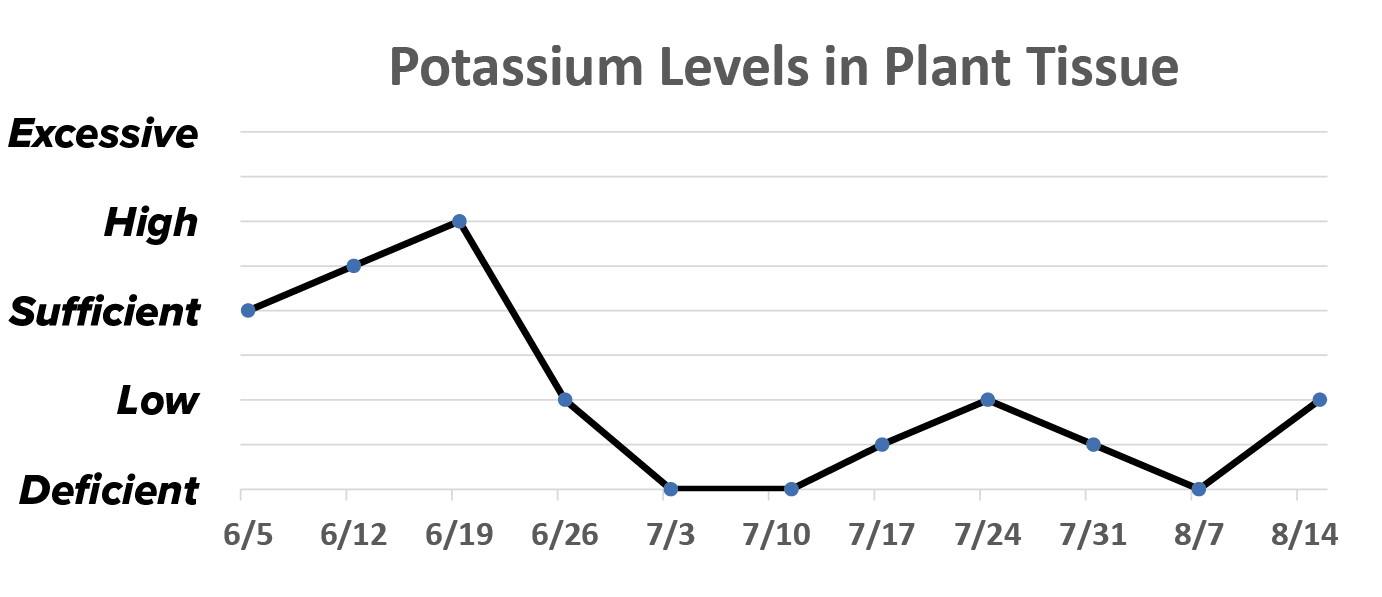
Think back to when you were in school. Let’s say there was a big test coming up where your entire year’s grade was based on how you did on this one exam. Imagine the pressure you would be under.
Just as you are about to start taking the test, the teacher hands you the answer key. The pressure is gone. You will now score 100% and receive an A+.
Why did I tell you this story…?
I want you to think about soil testing and plant tissue analysis as the answer key for your fields. With this data, you can ace the test, which means high yields, spending the right amount on each nutrient, and maximizing profit. Without the answers – and in a lot of cases, without great advice or instruction on exactly how to properly fertilize each crop – that would be just like walking into that final exam after skipping class all year, never opening the textbook, and guessing at every answer on the test.
Our goal for you is always to be as successful as you can be. The problem is each field is unique. I don’t know exactly what it will take for you to achieve top yields while not overspending on fertility. That’s where soil tests and plant tissue tests come in. With soil tests, we only need those twice per season. One complete test in the fall and a cheap, pre-sidedress nitrate test about a week before you want to apply in-season nitrogen (when necessary).
2021 is a big year, one where you have a chance for high profit. In order to maximize your opportunity this season and especially in future years, here are three things I ask you to do.

Pick two spots in a field – a high-yield spot and a low-yield spot. Flag (or GPS mark) both areas so you can return to those exact spots on a regular basis. Make sure the areas aren’t in the middle of the field because you’ll need to walk out to them each week. By the time you get done with the season, you should be able to figure out (fertility-wise) why the good area is good and the bad area is bad. Most importantly, it should set you on the right path to improving yields in each area.

First thing each Monday morning for the rest of the summer (or until your crop turns color/matures), go out to those two spots, pull plant tissue samples, and send them in separately for analysis. This is super simple, quick, easy, and inexpensive. When plants are small, take the whole plant (aboveground portions only). When plants get bigger, you will take certain leaves off the plant. To know exactly which leaves to pull, go to www.agphd.com/resources/ and download the Plant Tissue Analysis Sampling Guide from Midwest Labs.

You can use your results each week to make fertility applications either foliar or on the soil, but more importantly, we encourage you to chart your results for the season. We can also help you with this by putting the information into a spreadsheet and chart. Below is an example from one of our corn fields back in 2008. Look at how terrible our K levels were. That, of course, led to poor yields and grain quality in that field. With data (think, ‘the answers to the test’), we can make smart decisions. The next year, we increased our potassium applications and our yields “magically” went up… and so did our profitability.

